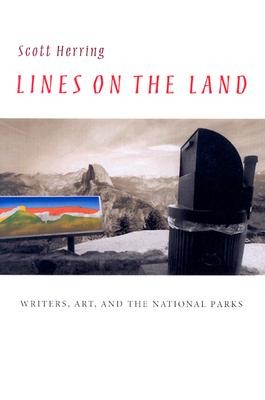
- We will send in 10–14 business days.
- Author: Scott Herring
- Publisher: University of Virginia Press
- ISBN-10: 0813922577
- ISBN-13: 9780813922577
- Format: 15.2 x 22.6 x 1.7 cm, minkšti viršeliai
- Language: English
- SAVE -10% with code: EXTRA
Reviews
Description
Lines on the Land
Writers, Art, and the National Parks
Scott Herring
The nineteenth-century photographer William Henry Jackson once complained of the skepticism with which early descriptions of Yellowstone were met: the place was too wondrous to be believed. The public demanded proof, and a host of artists and writers obliged. These early explorers possessed a vigorous devotion to the young nation's wilderness--the naturalist John Muir famously toured the land from Wisconsin to Florida on foot--and through their work established aesthetic categories that exist to this day. In Lines on the Land, Scott Herring contends that these writers and artists were canon makers, recognizing the national parks as naturally occurring works of art and conferring upon them a cultural prestige: the parks were the splendid focal points of the American landscape.
These early, canonizing works are homages to a vast, untouched wilderness. This praise would gradually give way, however, to a distinctly American anger--what Herring calls "outraged idealism." Later generations were faced with a changing culture that had imperfectly absorbed, and even misrepresented, the national-park aesthetic. The postwar park was overrun by cars and tourists who could not possibly match the pioneering naturalists' profound commitment to and appreciation for their surroundings. The collective tone of the parks' chroniclers, as a result, evolved from celebration of awesome beauty to indignation over the perceived corruption of the parks, both as an ideal and as actual physical settings.
Herring traces this shift through the work of a wide spectrum of creative minds, from early figures such as Muir and Thomas Moran to later observers of the parks such as Ansel Adams, Sylvia Plath, Edward Abbey, and Rick Bass. The text is punctuated by autobiographical "interchapters," in which Herring relates the book's chief themes to his own experiences in Yellowstone National Park.
Under the Sign of Nature: Explorations in Ecocriticism
EXTRA 10 % discount with code: EXTRA
The promotion ends in 22d.01:16:58
The discount code is valid when purchasing from 10 €. Discounts do not stack.
- Author: Scott Herring
- Publisher: University of Virginia Press
- ISBN-10: 0813922577
- ISBN-13: 9780813922577
- Format: 15.2 x 22.6 x 1.7 cm, minkšti viršeliai
- Language: English English
Lines on the Land
Writers, Art, and the National Parks
Scott Herring
The nineteenth-century photographer William Henry Jackson once complained of the skepticism with which early descriptions of Yellowstone were met: the place was too wondrous to be believed. The public demanded proof, and a host of artists and writers obliged. These early explorers possessed a vigorous devotion to the young nation's wilderness--the naturalist John Muir famously toured the land from Wisconsin to Florida on foot--and through their work established aesthetic categories that exist to this day. In Lines on the Land, Scott Herring contends that these writers and artists were canon makers, recognizing the national parks as naturally occurring works of art and conferring upon them a cultural prestige: the parks were the splendid focal points of the American landscape.
These early, canonizing works are homages to a vast, untouched wilderness. This praise would gradually give way, however, to a distinctly American anger--what Herring calls "outraged idealism." Later generations were faced with a changing culture that had imperfectly absorbed, and even misrepresented, the national-park aesthetic. The postwar park was overrun by cars and tourists who could not possibly match the pioneering naturalists' profound commitment to and appreciation for their surroundings. The collective tone of the parks' chroniclers, as a result, evolved from celebration of awesome beauty to indignation over the perceived corruption of the parks, both as an ideal and as actual physical settings.
Herring traces this shift through the work of a wide spectrum of creative minds, from early figures such as Muir and Thomas Moran to later observers of the parks such as Ansel Adams, Sylvia Plath, Edward Abbey, and Rick Bass. The text is punctuated by autobiographical "interchapters," in which Herring relates the book's chief themes to his own experiences in Yellowstone National Park.
Under the Sign of Nature: Explorations in Ecocriticism


Reviews